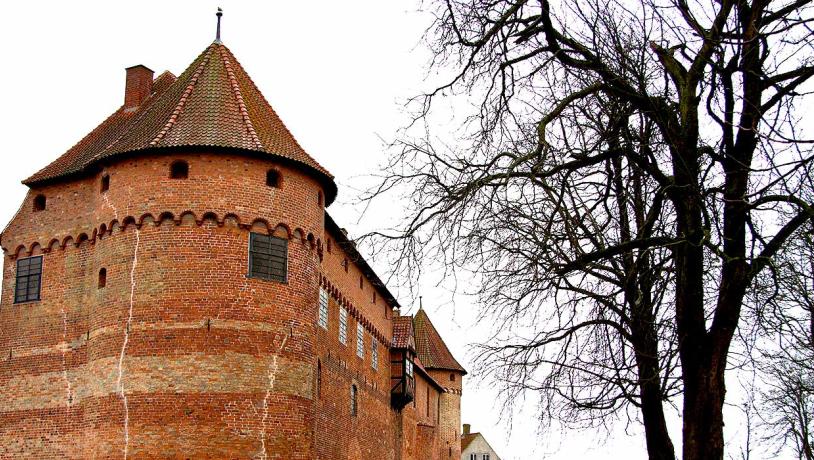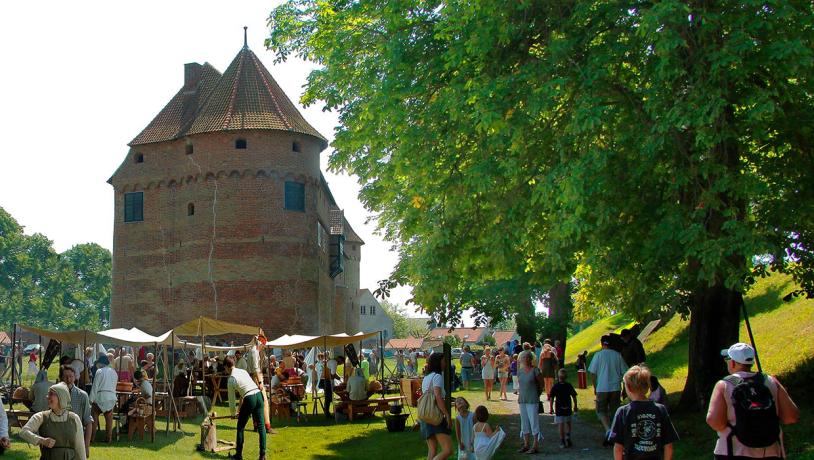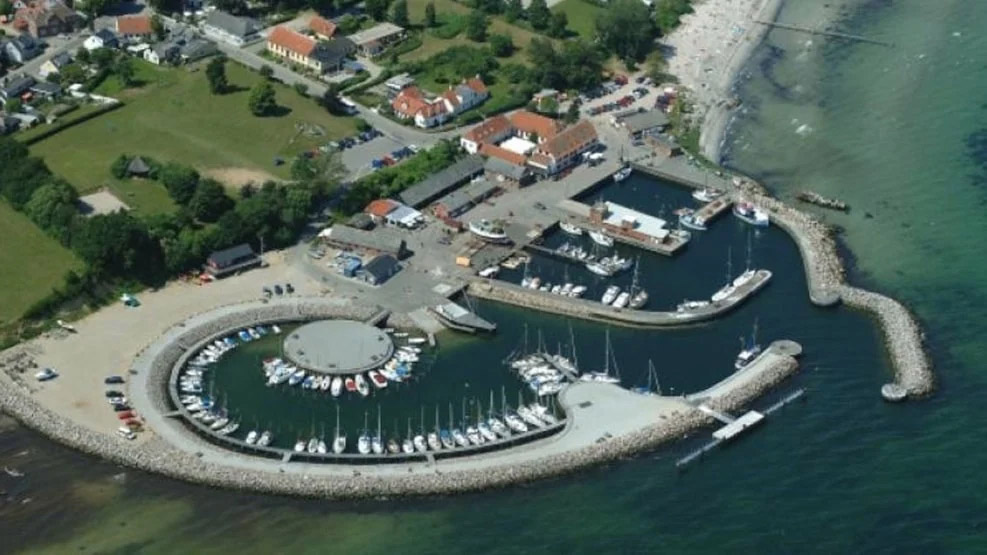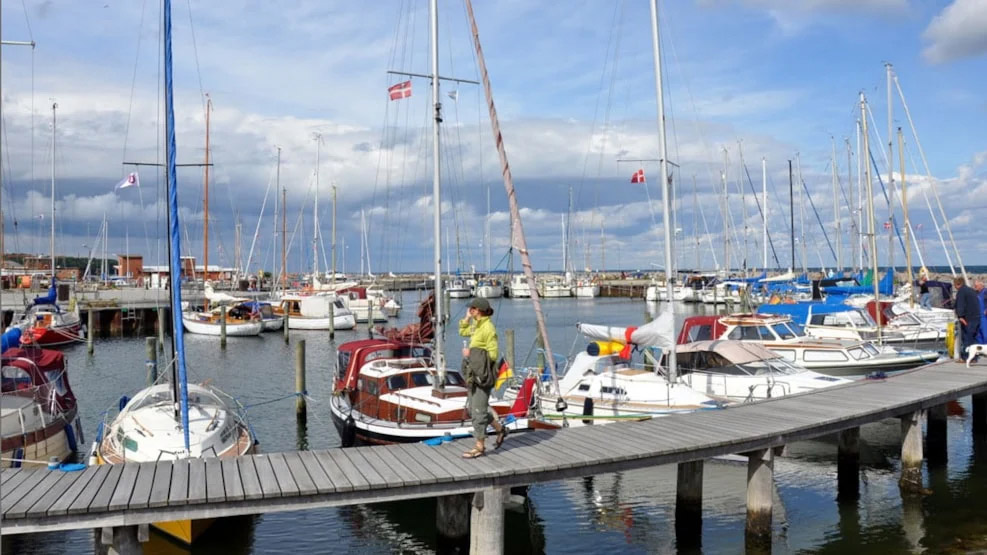Between
kings and
squires
Nyborg – Svendborg
On this stretch you will encounter the genesis of the Realm of Denmark. Thanks to the powerful fleets of the Viking Age, a single king was able to consolidate the country’s numerous islands into a single realm. But it required administration, laws and institutions to keep them united. This is where the royal city of Nyborg played a major role – something you can enjoy on this route.
You see, the king’s court required top quality food, wine and beer – and lots of it. That is why half of Funen has been a purveyor to the royal court of Denmark for 800 years. You might just be lucky enough to find a snack or two!
A LOT CHANGED IN THE 12TH-13TH CENTURIES. THE KING WAS NO LONGER JUST A LEADER OF MILITARY EXPEDITIONS. HIS TASK WAS TO RULE A COUNTRY WITH NEW ELITE CLASSES – THE BISHOPS AND KNIGHTS. IT WAS THE AGE OF THE DANEHOF.
THE KING ORDERED
750
barrels of oats
200
pork sides
140
lamb and sheep carcasses
129
geese carcasses
80
cut beef sides
12
cows
100
living pigs
MANSIONS ON THIS ROUTE








Practical links to points of departure and destinations
Oplev Nyborg (Klik her)
Attraktioner i Nyborg (Klik her)
Spis og drik i Nyborg (Klik her)
Overnat i Nyborg (Klik her)
Oplev Svendborg (Klik her)
Attraktioner i Svendborg (Klik her)
Spis og drik i Svendborg (Klik her)
Overnat i Svendborg (Klik her)
Se mere på VisitFyn.dk (Klik her)
Arts and crafts en route
Du kan opleve mange kunsthåndværkere og gallerier på ruten – enten kommer du forbi eller også er du kun en kort afstikker væk. Se mulighederne her:
Se mulighederne på VisitSvendborg.dk og VisitNyborg.dk
Food and drink en route
Øksendrup Cider: Taste this delicious, organic apple cider. Order a packed lunch in the morning and pick it up when you reach Øksendrupvej 13, Øksendrup.
Roadside stalls: During the summer you will come across countless roadside stalls, all selling fresh seasonal fruit and vegetables – strawberries, peas, berries and potatoes. Everything is grown on Funen and freshly picked. Pay with cash or MobilePay.
Bicycle and luggage service during your trip
Gratis bagageservice
Når du kommer til øen i perioden 1. juni – 31. august, giver vi dig gratis bagagetransport, hvis du skifter overnatningssted – fx på Herregårdsruten Fyn rundt.
Du skal bestille bagagetransporten minimum 4 dage før afrejse – og både det overnatningssted, du forlader, og det, du er på vej til, skal være bemandet i tidsrummet kl. 10-17. Se mere og book din bagagetransport her. (https://www.visitfyn.dk/fyn/outdoor-og-bike/bagagetransport)
Route download to gpx
Link til ruten her
THE ROUTE
0
KM
Nyborg
Slot
From the castle of a peripatetic king to a power base
In the Middle Ages, kings were peripatetic – in other words, constantly on the move. In the same way that EU politicians commute between Brussels and Strasbourg, the king would travel around the kingdom with his court to exhibit his power. Today, this is known as visible leadership.
When the king arrived, the streets would be packed. His entourage was 400-600 strong. In 1554, in addition to the ordinary court staff, the king’s court also included 21 chefs, some bakers, a butcher, 3 fishermen and 5 hunters. The servants included 3 footmen and 1 butler. There were also doctors, preachers, secretaries and scribes – and a large team of craftsmen. Then came around 12 musicians, along with at least 1 court jester, 1 large female dwarf, 2 small ones, and 2-3 male dwarfs. There was also a monkey, which was fed almonds and raisins.
The entry must have made quite an impact in Nyborg, which had between 2,000 and 3,000 inhabitants at the time.
The King often chose Nyborg Castle as his winter residence. It was also at Nyborg Castle that the king held the so-called Danehoffer – medieval parliamentary assemblies, where the king, his squires and bishops discussed legislation affairs of state. The location in Nyborg Castle was legalised in 1284, making the castle the Christiansborg of the day. It was at a Danehof in 1282 that King Erik Klipping signed a charter, which is also referred to as Denmark’s first constitution. It curtailed the power of the king. Now, even he and the people closest to him were subject to the laws of the land. The country would now be governed on the basis of law and order – not by sword and power.
LAW = DEVELOPMENT.
0
KM
WHY SO
MANY MANOR
HOUSES?
A hinterland teeming with ministers
In 1284, King Erik Klipping, the nobility and the church enacted a low, stipulating that there should be an annual Danehof in Nyborg. The date was set for the Sunday at the end of Whitsun week. Nyborg thus became a strong administrative power base in Denmark. As a result, the most powerful families in Denmark amassed in manors and houses in and around Nyborg. So, by the 16th century the king had his most trusted ministers at hand. For example, the Chancellor Johan Friis lived at Hesselagergård. That was the equivalent of prime minister at the time. Frands Brockenhuus resided in Egeskov Castle. He was a Field Marshal, the supreme commander of Denmark. His brother Jacob Brockenhuus was in charge of the fleet. Eskild Oxe of Løgismose was the Lord High Treasurer (Minister of Finance) until his death in 1563. Eiler Rønnow was a Privy Councillor. He lived at Hvidkilde. Upon King Frederik II’s accession to the throne, Ejlar Bardenberg of Skovsbo was appointed Steward of the Realm, the highest ranking official in Denmark.
Dyrehave Mølle and Kongens Fadebur
See the king’s shopping list from 1554
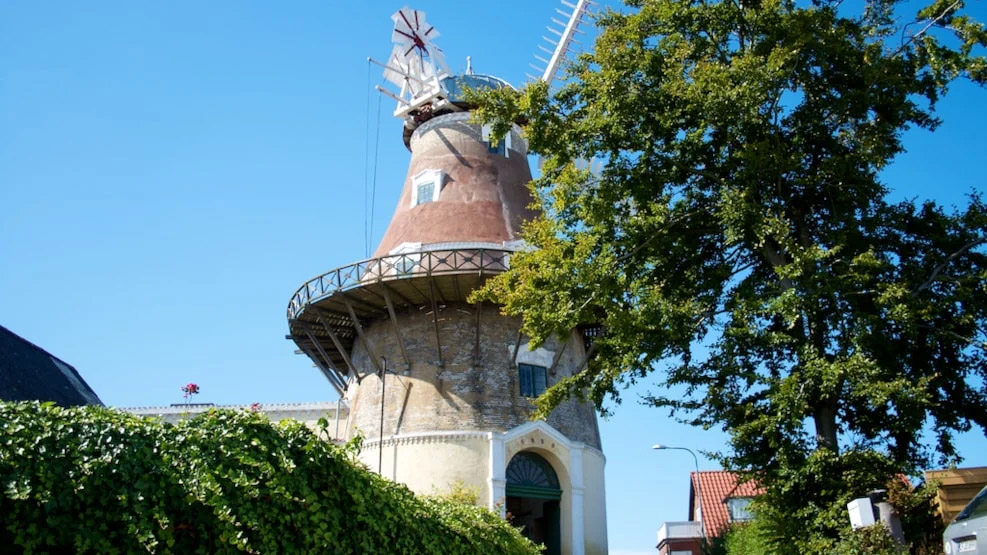
Take a short detour from the route and head for Dyrehavevej 84. Here you will find Dyrehave Mølle. The mill is the headquarters of Kongens Fadebur (The King’s Pantry). It is part of a food community you can encounter at various places during your trip. Kongens Fadebur uses the historical setting to boost business and product development. So, you will come across Kongens Fadebur in fruit and vegetable departments, in refrigerators and on the beer shelves in the numerous grocery shops you will come across on your route through the area.
Back in the Middle Ages, almost half of Funen belonged to Royal Nyborg, and the peasants paid taxes to Kongens Fadebur in the form of crops and products. The king demanded the highest quality and large quantities. Not only from the farmers on the island of Funen, but also from vassals in Jutland and on Zealand. In a ‘shopping list’ from 1554 sent to Jørgen Barnekow of the fiefdom of Aakjær Len, we read: 750 barrels of oats (1 barrel = 139 l), 200 sides of pork, 140 sheep and lamb carcasses, 129 geese, 80 bulls, 12 cows and 100 live pigs. Similar lists were sent to 12 other fiefdoms that winter. Then there were additional orders. For example, just one week later, Jørgen Barnekow was expected to send 200 live pigs. Without delay. The king must have had guests!
5
KM
Gammel
borg
From Nyborg to Gammelborg

Where there is a Nyborg (‘ny’ = new), there must be a ‘Gammelborg’ (‘gammel’ = old). Researchers have been looking for one for a long time. Ancient sources refer to a Gammelborg on a promontory in Vindinge Å river. But no one thought it was true. Now, recent findings and analyses have found that the oblong mound visible on aerial photos constitutes the remains of a fortress dating back to the 6th century. It is a so-called refuge castle – a place where people could seek protection from the enemy. Piles were replaced at some point, indicating that ‘Gammelborg’ was used during the Viking Age.
9,5
KM
Sulkendrup
Mølle
A 10th-century technological breakthrough
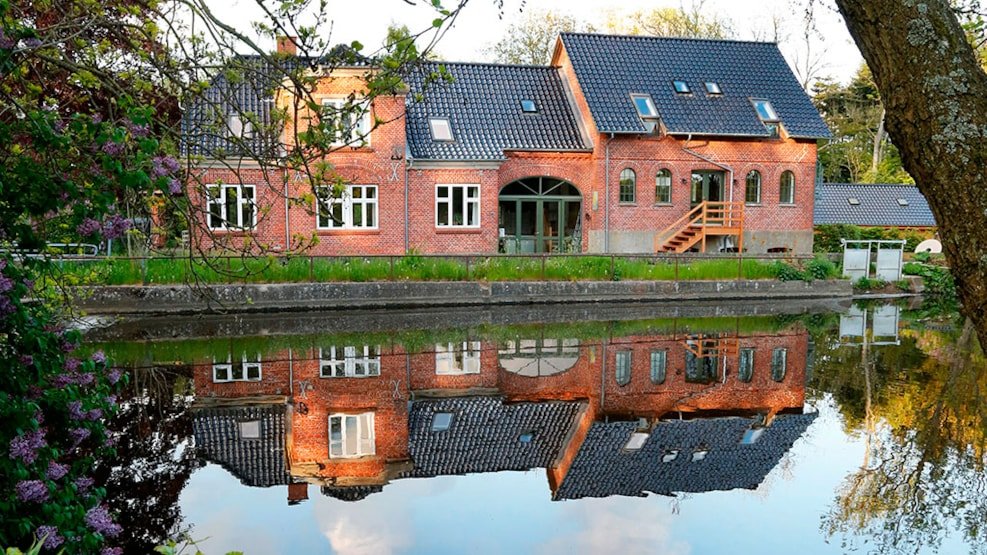
The late 10th century witnessed an important technological breakthrough. The watermill arrived in Denmark. Even the very first watermills could replace a workforce of 100.
They became a driver of growth in the society of the time. Kings and nobles both got involved in spreading the new technology. Both King Valdemar and the later Valdemar Atterdag were famous for their numerous watermills. They would not allow “the waters to flow into the sea without having benefited society first.”
Sulkendrup Mølle is located in a deep woodland valley, reflected in the dammed mill pond. The mill was first mentioned in 1425 and has been in operation for more than 600 years. The last grain was milled in 2002, when the mill was the last working watermill in Denmark.
That is what you would call long-lasting technology.
Today, Sulkendrup Mølle is an experience centre for conferences, holidays and parties. In the forest of Mølleskoven you can visit a passage tomb and crawl 5,000 years back to the Bronze Age. And every Sunday in Summer they serve coffee, home-baked goods and ice cream from 12.00 noon to 5.00 pm. See the opening hours here.
21
KM
VISIT THE
ARTIST TOWN
An artists’ colony on your journey
Art has always been a part of our lives. For example, in 1525, when Nyborg Castle became the king’s permanent royal seat, the castle was modernised. The first floor was given a higher, far more impressive ceiling. A new hall was added with magnificently carved beams, while the walls of the rooms were given a beautiful geometric cube pattern, which was all the rage in Mediterranean countries at that time. The pattern has survived to this day.
In today’s society we all have access to art. That is evident when you cycle through the small winding roads and abundant countryside and arrive in Tårup. Stop for a moment and take a break. If you are into art, stay for a few hours. There is plenty to see here. You see, many artists and bohemians have settled in Tårup. There are light installations, glass art, ceramics, paintings… Find out more here.
21,4
KM
Work of art
Tårup Forsamlingshus, Tårup Byvej 26, Tårup, 5871 Frørup
23
KM
Kongshøj
Mølle
A new age around the corner
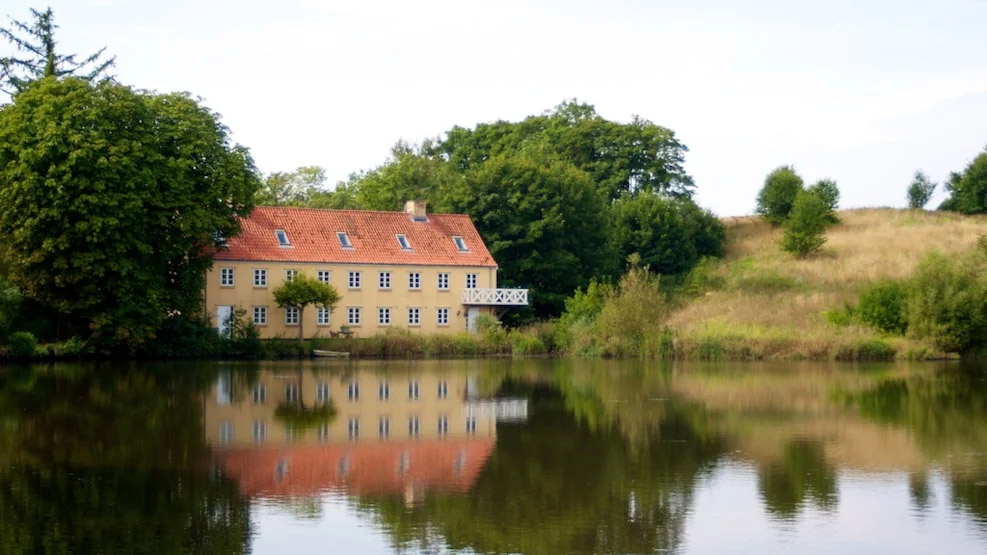
In the latter half of the 19th century, the nobility was challenged by a new class who were ready to seize power – the factory owners – the kings of the Industrial Revolution. Kongshøj Mølle had a foot in both camps. The merchant, Th. I. Ahlmann, a man of progress, wanted to build an ironworks like the German facility he knew from Rendsburg. He made a deal with Gebhard Moltke, a squire who resided at Glorup. In this case, however, it was the olden days that outlived the progress. The ironworks ended its days in a foreclosure auction in 1909.
The water used to operate the mill was created by damming Konghøj Å river. It runs in a narrow valley. So, Ahlmann was able to dam the water to a height of 7 metres. It is the highest water dam on the island of Funen. From the outset, in addition to forges, iron shears, drills, whetstones etc., the ironworks had 3 trip hammers – 1 weighing 800 pounds and 2 weighing 550 pounds – and 2 forging hammers, each weighing 52 pounds. (1 pound = ½ kg). So, half the parish could hear progress banging away, as the giant hammers processed the iron and shaped shovels, picks and scythes for agriculture.
The mill was later expanded with the addition of a separate building for grinding grain.
From 1909, only the grain mill in Kongshøj was in operation. In 1921, the water wheels were replaced with an electricity generating turbine. Electricity generation continued up to 1962 – and resumed in 1979. So, even today the old mill still supplies the grid with power.
The nature in the area is perfect for Instagram – but unfortunately the area is not open to the public. You can stop at the small green area next to the mill pond. Or enjoy the view from the road as you cycle past.
25,5
KM
THE TASTE OF
DENMARK’S
ORCHARD
Øksendrup Cider
South Funen is the orchard of Denmark. This is evident as you cycle through the area. There are extensive orchards everywhere. Enjoy them. When the trees are blossoming, with the promise of luscious fruit later in the year, the fragrance alone is to die for. Not to mention the taste. It is perfect just as it is or refined by wine, cider and spirit producers. Take Øksendrup Cider, for example.
Øksendrup Cider grows organic apple varieties, specially selected for cider production. The raw juice ferments slowly in tanks for about 6 months, and then ferments further in bottles for about 3. The bottle fermentation produces the delicate natural bubbles that are the hallmark of South Funen’s excellent cider.
If you call ahead, you can order a delicious packed lunch that will be fresh and ready and waiting for you when you drop by. Order it here.
26
KM
Anhof
Gods
The Lieutenant General killed his brother-in-law
The Lieutenant General killed his brother-in-law
Anhof used to be called Ovenskov. In 1529, King Frederik I made over Ovenskov to Johan Friis, the owner of Hesselager. After a few years, Johan sold the farm to Henning Valkendorf from Glorup. Right up until 1916, the farm belonged to the Glorup family.
Lieutenant General Hans Ahlefeldt was responsible for the name ‘Anhof’, renaming renamed the farm in honour of his wife, Anna Rumohr. Hans Ahlefeldt was a colourful character with a long military career. During his first marriage, he killed his brother-in-law during a drinking party and escaped abroad, where he first served France and then Sweden. He was later pardoned, returned to Denmark and, at the age of 52, married the 13-year-old Anna Rumohr.
The current main building dates from 1885. Originally it was only a one-storey building, but in 1916 the owners added a second floor.
28,5
KM
Glorup
Gods
One of the finest Baroque manors in Denmark
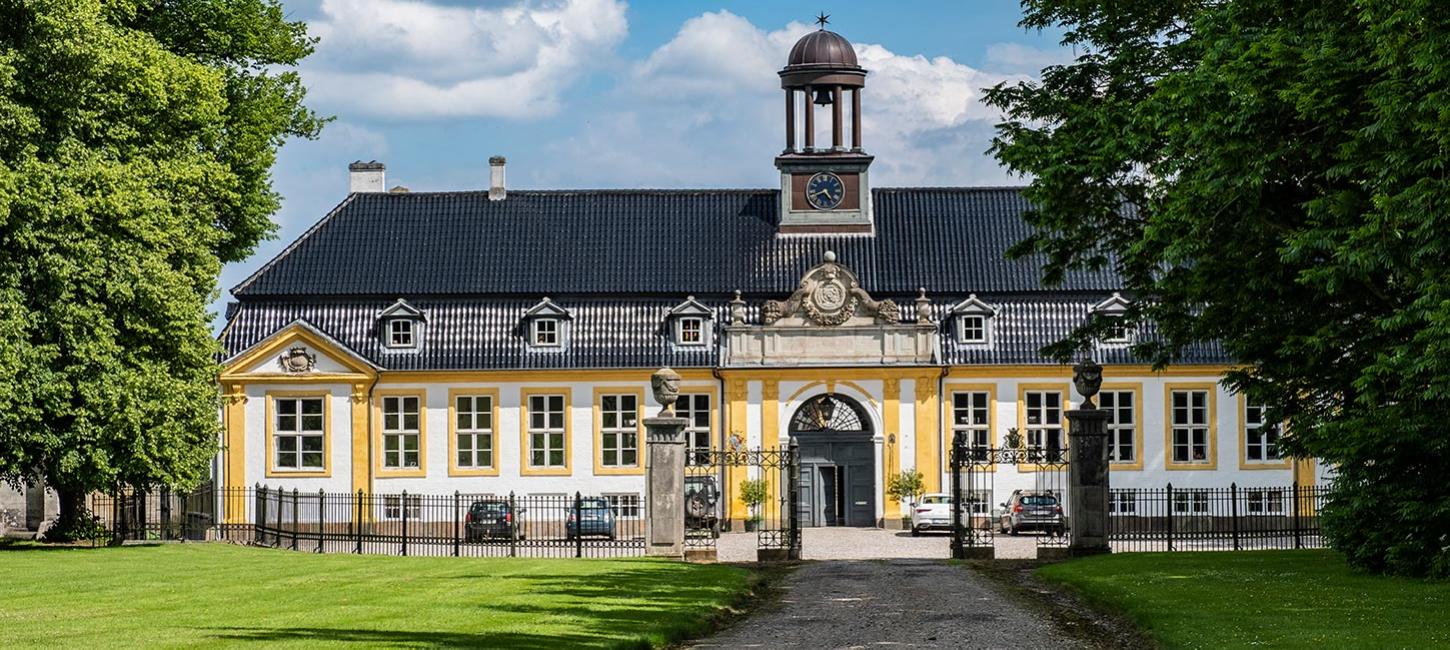
From the 15th century until 1658, Glorup belonged to the Valkendorfs. Several generations played leading roles in the political life of their time. Christian Valkendorf, for instance, was a king’s minister. He was treasurer to King Frederik II and later Steward of the Realm to King Christian IV.
At the end of the 16th century he built ‘The New Glorup’ – a four-wing Renaissance farm, with four equally-sized wings and four towers. Between 1743 and 1744, Chr. Ludvig Scheel subjected the manor to extensive refurbishment. The towers and one floor disappeared. And a massive mansard roof was installed on top of all four wings. After just 21 years, there was a new owner and yet more changes. The family who still own the estate acquired it in 1762. Count Adam Gottlob Moltke commissioned N.H. Jardin, the leading architect of the day, to modernise the property. The result was one of the finest Baroque manors in Denmark, featuring a new colour scheme, an extra floor on the west façade of the inner courtyard and a new superstructure on the main gate etc. The garden was also given a makeover, becoming one of the first Romantic gardens in Denmark.
The great Danish fairy-tale writer Hans Christian Andersen often visited Glorup, and wrote in a letter: “This is exactly the kind of place I love to stay in – a manor house in the Italian style and a garden like the parks of England.”
The garden is open to visitors from Thursday to Sunday between 10.00 am to 4.00 pm, from 1 April to 31 September.
PLEASE NOTE: Please bear in mind that you are visiting a private garden. The manor is the family’s home. So, please respect the signs, keep to the designated paths and keep your distance from the actual manor house.
31
KM
QUALITY
CIRCLES
FOR SALE
From nature management to the finest yarn

On South Funen, we have been breeding sheep and lambs for at least 1,000 years. The meat fed us and the wool kept us warm. Even the tough old Vikings needed warmth. But they also needed sails, which they wove out of flax and wool. No wool – no Viking ships. A medium-sized sail took about a year to weave and required wool from around 200 sheep.
As you cycle along the route, you will realise how popular sheep still are here. Many of those you see provide the wool for Hjelholts Uldspinderi. It is a 4th-generation company that has been spinning wool into yarn since 1878. Their products are excellent. If you are a knitter, take a look at their website or, better still, drop by their yarn shop. (https://www.hjelholt.dk/butik)
Today, Hjelholt has 800 ewes. As well as providing wool for the spinning mill, they also produce around 1,400 lambs every spring. As part of Svendborg municipality’s nature management, the sheep and lambs graze on a number of areas at Glorup Castle and, through collaboration with Rosilde Højgaard, various areas at Holckenhavn Castle.
The result is healthy, happy animals. You can buy or order the organic lamb from Hjelholt in Rosilde Højgaard’s farm shop in Nyborg. It just requires a small detour from the route at Nyborg.
33
KM
Rygård
FOREST
Life in the old stone walls
Rygård Forest belongs to Rygård Gods, which in turn belongs to Glorup Gods. It is entirely surrounded by ancient stone walls. Stone walls provide a habitat from countless flora and fauna. These stone walls often originate from boundaries dating back to the Iron Age, Viking Age or the Middle Ages. That is why all stone walls in Denmark are listed under the Consolidated Act on Museums.
35
KM
Gald
bjerg
‘The sacrificial mountain’
Just stop for a moment and catch your breath. You are at the highest point in your journey, 71 metres above sea level. This is Galdbjerg. ‘The sacrificial mountain’. Just think of all the people, animals, grain and weapons that were sacrificed here. After all, that was the custom back then. But that took place in bogs, where they believed they were particularly close to the after life. When it comes to Galdbjerg, the word gald (sacrifice) is more related to the Old English word gield, which developed into geld – money. So the name may refer more to the fact that they came to this elevated, visible spot to negotiate their debts or taxes. We have no proof. But it’s a great place to wipe the sweat off your forehead before cycling further. Fortunately, it is a downhill ride!
37
KM
THE HALL
OF THE KING
OF GUDME
The metropolis of Scandinavia in 300 AD
In 300 AD, Gudme was the largest city in Scandinavia. This metropolis consisted of a staggering number of farms – 55 or thereabouts. There were probably around 500 inhabitants. This means that this settlement was 5 times the size of the average village at that time.
Scientists and soldiers have fortune have scoured the area with metal detectors and found gold and silver galore. What is more, in 1993 archaeologists also found the Hall of the King of Gudme – or rather halls plural. It was a sensation.
With a bit of imagination, you can see the outline of history here. Post holes and other traces indicate the great hall. It was 47 metres long and 10 metres wide. The roof was supported by eight sets of strong posts, and the entrances were as wide as gates.
The rich finds and place names with their religious references suggest this was the residence of a nobleman in the middle of an area with special status in the society of the time. ‘Gudme’ means ‘home of the gods’. Other place names – Galdbjerg and Albjerg, for instance – mean ‘sacrificial mountain’ and ‘sanctuary mountain’. The nobleman may have been the prince or king of a large area. This makes Gudme an archaeological example of the power structures that dominate the Iron Age and Viking Age.
40
KM
Broholm
CASTLE
Spend the night in a castle
The first mention of Broholm Castle was in 1326, during the reign of King Christoffer II. Since then, the castle has witnessed a further 29 kings and 2 queens, including Denmark’s current monarch, Her Majesty Queen Margrethe II. At Broholm, one family has followed another on the basis of inheritance and marriage. Only once in the property’s 700 years of history was the castle up for sale. That was in 1641, when Otte Skeel purchased this splendid property. 1730 saw the advent of the Sehested family, when Niels Sehested married Elisabeth Skeel. Today, Broholm is run by the 13th generation.
If you fancy a taste of good, old-fashioned luxury, book a one- or two-night stay here – find out more here. Or simply visit the park. Thanks to archaeological passion of N.F.B. Sehested, there is also an excellent collection of ancient artefacts. Lord of the castle from 1839 to 1882, he was a particularly dynamic gentleman. It was during his time that the largest-ever find of gold in Denmark appeared in the plough furrows. Buried way back in the Iron Age, the ‘Broholm Treasure’ had finally been revealed again. There were more than 4 kilograms of gold. He invested it all to make his dream come true – to transform the hamlet of Lundeborg into a royal borough. Read more about all this under ‘Lundeborg’.
The castle has also given its name to a breed of dog. The Broholmer is a very old dog breed and often called the Danish mastiff. It is a calm, good-natured dog. But don’t be deceived. It is also an excellent guard dog!
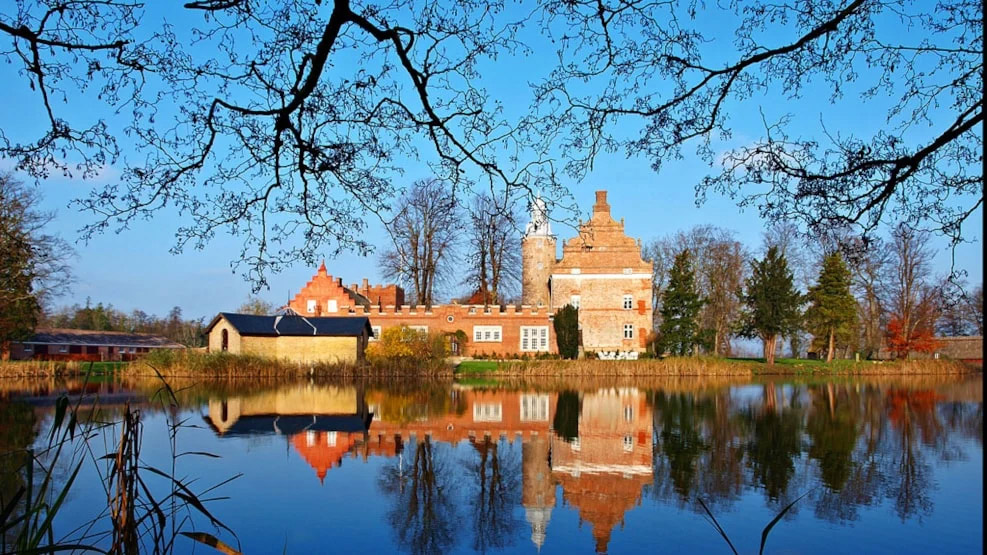
44
KM
Lunde
borg
The dream of a royal borough
The history of Lundeborg is closely related to that of Gudme and Broholm Castle.
Gudme had its heyday in or around 300 AD. By the standards of the day, Gudme was a metropolis, covering more than 500,000 m2 the equivalent of 100 football pitches. The city traded extensively abroad – including the Roman Empire. Lundeborg was the loading and trading centre for the city. The ships of the day could easily dock at the flat sandy beach, where there was no shortage of sales booths and craft stalls. The activities were seasonal, and everything closed down during the chilly embrace of winter.
In or around 1860, the owner of Broholm Castle, N.F.B. Sehested started dreaming of a town. Until the end of 1857, the royal boroughs enjoyed a trading monopoly. And this is exactly what Sehested wanted. He would build a modern town on the beach at Lundeborg, where previously there were just a handful of fishermen’s houses. He built a harbour, a warehouse, a merchant’s house, a reception centre and industrial facilities with housing for the workers. He also advertised – particularly in South Schleswig newspapers – for Danish-minded colonists, who would thus liberate themselves from the yoke of Germany. A motley bunch responded. Unfortunately, this was not enough to make Sehested’s magnificent dream come true. The dream fizzled out and, instead of turning into an enterprising royal borough, by the end of the 19th century Lundeborg had become a tranquil fishing village and seaside resort.
Today, Lundeborg is a particularly charming place to stop en route. Enjoy an ice cream on the harbour or eat your lunch here. The town even acquired its own anthem, which Ove Bager wrote and became famous for. Listen to it here – performed by the folk duo Lasse and Mathilde.
47
KM
Mosgaard
Whisky
and Gin
A micro-distillery with great taste
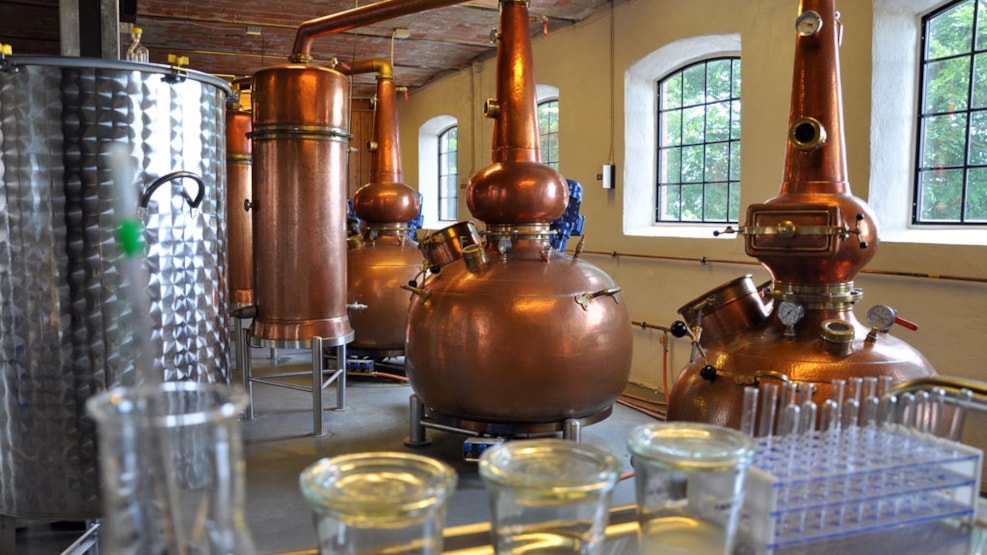
Actually, we should probably blame the Romans. Even though people were familiar with the principle of distillation prior to our era, it was not until the Romans perfected the art of glass making in the 13th century that we really discovered how to distil wine and beer to produce stronger drinks. Doctors embraced this new substance, christening it ‘the water of life’. Arnaldus de Villa Nova stated, for example:
“The name is particularly apt, for it is the water of immortality. It prolongs life, cheers you up, revives the heart and keeps you young.”
Of course, now we know that we should drink in moderation. Drink little – but preferably something decent. Mosgaard is the answer. They make whisky and gin and have won medals for it. Make a small detour up Tanghavevej. Find number 43 – and enjoy yourself! To see the opening hours and to book a guided tour, click the link below.
Address: Mosgaard Whisky, Tanghavevej 43, 5883 Oure
60
KM
Skårupøre
Vingaard
Hurry slowly

At Nyborg Castle the king required wine. Lots of wine. When the castle became king’s winter residence in 1554, the king requisitioned a shipload of wine for his reserves. He ordered 8,000 litres of white Rhine wine alone – and 1,000 litres of red Rhine wine. Had it been today, the king would need to look no further than 35 kilometres south. Here he would find a small, organic, Cittaslow company devoted to quality, the good life hurrying slowly. Carsten and Bente have been making wine here for more than 20 years. Today they make crisp, fresh white and rosé wines, effervescent sparkling wines, delicious dessert wines and a smooth, round brandy. There is a farm shop and a summer café, and it only requires a short detour to find them. Come and enjoy a glass of something delicious or purchase some local specialities. Click to see the opening hours.
Address: Skaarupøre Vingaard, Skårupørevej 28,
5881 Skaarup Fyn
60
KM
Aqua
Vitae
Aquavit. Eau-de-vie. The water of life.
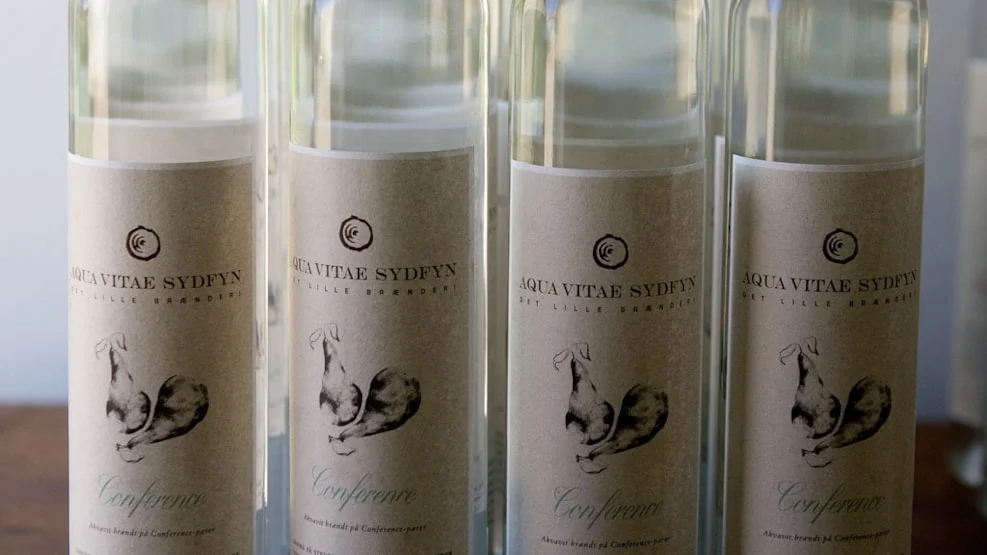
There was also ‘water of life’ in the King’s Pantry. In an order to three vassals, dated 4 April 1555, the court requested 360 barrels of good rye and 48 barrels of butter. At the same time, the king’s doctor ordered the vassals to distil some brandy for the king. There is no doubt that the king and his doctor would have loved Aqua Vitae, just 200 metres from Skårup Vingaard. The distillery was founded in 2005 by Lene and Karsten, who are now dedicated to creating fruit, eau-de-vie type spirits, made from the excellent fruit that grows in South Funen. Apples. Pears. Grapes. Plums. Cherries. Quinces. Strawberries. Raspberries. With and without barrel aging. It is definitely worth a visit. The farm shop is two farms away from Skårupøre Vingaard. There are no fixed opening hours. So call them in advance to arrange a visit. Click ‘About Us’ on the Aqua Vitae website.
Address: Aqua Vitae, Skårupørevej 22, 5881 Skårup
64
KM
Svendborg
Vingaard
From luscious dessert wines to birch bubbly
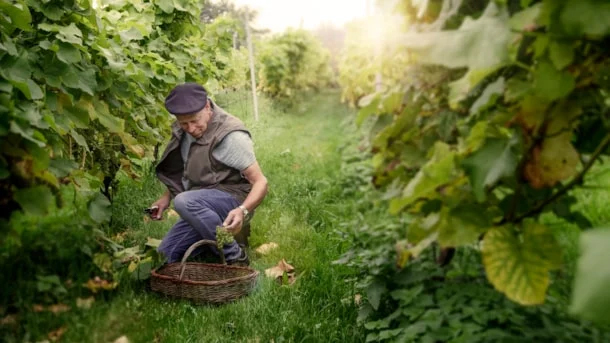
Denmark’s most famous royal wine is the Rosenborg wine – a Rhine wine first served at a New Year’s Eve banquet in 1598. Ever since then, with just a few exceptions, it has been a regular feature of the banquet. The royal family describes the taste as “distinctive, curious and in the past somewhat sour.” So sour, in fact, that they used to serve sugar with the wine. Don’t worry, though. There is nothing like that at Svendborg Vingaard. They have everything from a deliciously sweet dessert wine and a sparkling birch wine to a characterful blackcurrant rum, brandy and spiced schnapps. The farm shop is located just 1.7 kilometres off the route. Currently there are no fixed opening hours. But call the winery for more details. You can find the number on their website.
Address: Svendborg Vingaard, Gammel Skårupvej 155, 5700 Svendborg
69
KM
work of art
Fremtidsfabrikken, Jessens Mole 11, 5700 Svendborg
69
KM
Svendborg
The maritime capital of Funen
Your entrance to the South Funen Archipelago
Shipping is a key element of Svendborg’s DNA. The town was built on a small bay, which provided good protection for the harbour. During the Middle Ages, Svendborg was the second largest town on Funen with a flourishing herring industry until the mid-16th century. Svendborg looks out on the South Funen archipelago. From here you can hop on a ferry to many of the islands. Ærø is particularly easy to reach. Up until the 1980s the town was known for its shipbuilding. There are still commercial activities at the harbour, but most are related to the experience industry. So, drop by Frederiksø for a delicious cocktail or live music. Hit the town and replenish your energy, ready for more cycling challenges. Scroll down and find links to Svendborg below.
SVENDBORG IS A CITTASLOW TOWN THAT INCORPORATES ALL THE GOOD THINGS ABOUT HISTORY INTO ITS DEVELOPMENT, CELEBRATING SIMPLE JOIE-DE-VIVRE WITH A STRONG EMPHASIS ON GREAT FOOD AND LOCAL PRODUCE. YOU AND YOUR TASTE BUDS ARE GUARANTEED A GREAT TIME!
Practical links to points of departure and destinations
Oplev Nyborg (Klik her)
Attraktioner i Nyborg (Klik her)
Spis og drik i Nyborg (Klik her)
Overnat i Nyborg (Klik her)
Oplev Svendborg (Klik her)
Attraktioner i Svendborg (Klik her)
Spis og drik i Svendborg (Klik her)
Overnat i Svendborg (Klik her)
Se mere på VisitFyn.dk (Klik her)
Get your ‘Stage Badge’
You have now cycled through the region where the Kingdom of Denmark was born. Claim your badge as a reward and everlasting reminder of what you have achieved. You have earned it as proof of your efforts. Download it as an image here and save it in your photo archive. Share your achievements with your friends. Upload your badge on Instagram, for example, using hashtags such as #herrregårdsruten, #mellemkongerogherremænd, #bikeislandfyn etc.

